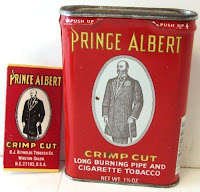When they added the living room onto the front of the house they built a fireplace. It never did draw well from the day it was built. But they used it anyway.
The living room was first used as the office where the railroad men settled their tabs, and there was a tall large glass enclosed cabinet where cigars and tobacco products were kept on hand for sale to any of the men who used those products.
One Sunday they had a house full of company and the weather was cold and Chuck had a hard time getting close enough to the fireplace to get warmed up, and he had little to no patience.
He went to his room and got a hand full of firecrackers and worked his way around till he got close enough to the fireplace to throw the firecrackers into the fire.
A pathway cleared quickly when the firecrackers began blasting, but mischievous Chuck was in trouble again big time with both parents. Got his backside warmed royally, but not the way he had planned.
And even though he got a spanking, he always thought that had been one of his most fun pranks of his life,
His brother Hoyt was eight years older than Chuck. He did a lot of the driving for the family, and a lot of the mechanical work needed to keep the cars running good. One of the cars was a Model T Ford.
Mechanics were pretty simple back then. I’m not sure of what the problem was, but Hoyt who was around fourteen at the time, took the transmission apart to work on it. Hoyt was very meticulous.
As he took it apart he laid the parts out, systematically on an old sheet spread out on the ground; in the order that he took them apart so that when he put it back together it would be right. Papa came home as he was putting it back together. He stood and watched for a bit, and then told Hoyt he was putting it back together wrong.
Hoyt explained “Papa it can’t be wrong, I’m putting it back together just exactly like I took it apart.” Papa said “I don’t care how you took it apart and laid it out, you’re putting it back together wrong. This part here goes there, I know what I’m talking about, and you do it like I said.”
Hoyt said “Yes sir” and put it back together like Papa said. And when he had it all together, he got in and cranked it up to test it out. He pushed in the clutch and put it in reverse, he eased out on the clutch and gave it a little gas and the car moved forward.
Hoyt put on brakes and stopped. Papa asked him why he’d stopped and, Hoyt said “Cause it goes forward when I put it in reverse.”
Papa said “You didn't give it enough gas to know what it was doing.” “Put it in gear and give it some gas!” Hoyt did and the same thing happened. Papa yelled at him “Get outta the damn car and I’ll show you how to do what I’m telling you to do.”
Hoyt got out and Papa got in. He put it in reverse, let the clutch out, and really stomped on the gas pedal and went right through the back wall of the garage building. When he got the car stopped he got out and told Hoyt “Just go ahead and do it however you were doing it.”
To be continued













